In the industry of social media marketing, jargon is used loosely and things can change quickly. If you have ever found yourself confused by any of the terminologies by industry or by platform, rest assured in knowing that we have you covered!
Social media is the thing that every brand acknowledges they need, yet many companies struggle to crack the code of success or lead conversions on the platforms. To excel in the digital environment of social media, educating yourself on the terminology is essential (not to mention all the hashtags).
Here is an extensive list of social media marketing glossary terms that includes some of the most used phrases within the industry, as well as major platforms, including Facebook, Instagram, and Pinterest.
General social media marketing terms:
Brand Advocate — A brand advocate is a brand-loyal individual with less than 1,000 followers. A brand advocate can also be considered a nano influencer.
Branded Hashtags — Unlike general hashtags, branded hashtags reflect the brand name, tagline, or motto. The purposes for these hashtags are for branding purposes, not necessarily for consumer use. However, the more a brand repeats these hashtags while building a social media presence, the more consumers will consider them.
Chatbot — Using the technology of artificial intelligence and the concept of “If this, then that,” a brand can use chatbots to help them answer commonly asked questions automatically.
Clickbait — Clickbait is a catching or intriguing headline for an article that is intended to drive website clicks, but has no actual relevance to the content on the landing page.
Click-Through Rate — A click-through rate (CTR) tracks how many times your audience clicks your ad on a platform.
Notable Mention: The rate is the total number of clicks divided by the number of times it was shown (impressions) and then converted into a percentage.
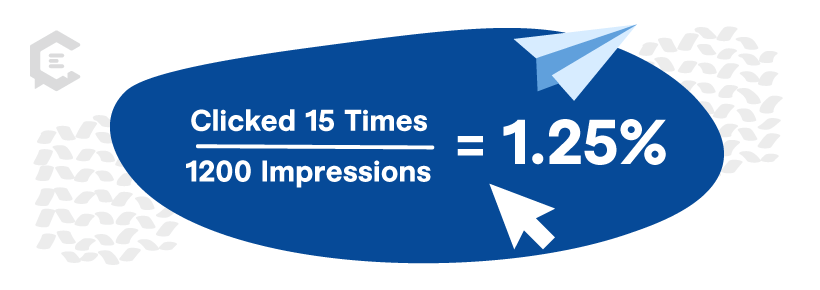
An example: If you have an ad that includes a link that was clicked 15 times, and you had 1200 impressions, your click-through rate would be 1.25 percent.
Direct Message (DM) — A direct message is a private message sent from one user to another. It can also be a group of users within a private message.
Engagement Rate — An engagement rate is a metric that measures the audience engagement with content on a respective platform. Engagement can be considered as likes, comments, shares, favorites, etc.
Notable Mention: The calculation of the engagement rate is the total number of engagements, divided by the total followers, then multiplied by 100.
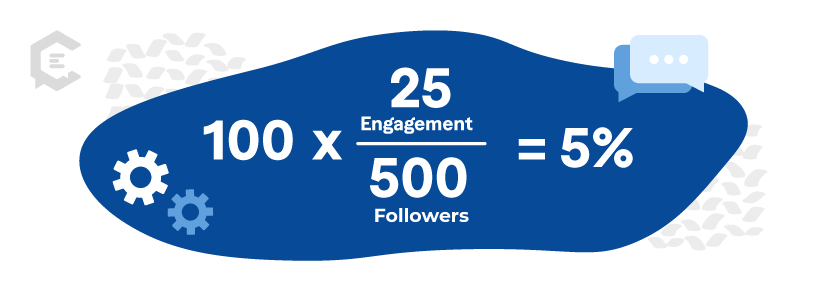
An example: If you received 25 engagements on an Instagram post, and you have 500 followers, your engagement rate calculation is 25/500*100= 5%
Evergreen Content — Evergreen content relates to messaging that remains relevant regardless of time, season, or content marketing campaign. Most evergreen content can be used throughout the year and still connects to any content strategy or campaign objective.
Facebook — Created in 2004 by Mark Zuckerberg, the social platform is designed to connect family, friends, and like-minded people to build an online community. The platform has 2.4 billion users around the world.
Did you know that Facebook was initially created for college students and required an active email addressed associated with a college university to join? The restriction was released in 2006, allowing all consumers to join the platform over the age of 13.
Geotargeting — Geotargeting allows for the direct focus of a specific user group by location, zip code, device, or IP Address.
Hashtag — A hashtag on social media connects similar content and like-minded people, acting as a real-time aggregator for content that reflects the same hashtags.
Influencer — A social media influencer is one who has significant influence within their community of friends and followers.
Influencer Marketing — Influencer marketing is a term used to address individuals in a specific niche or field that have a high number of people following them, and they have a significant influence on purchasing behaviors within an online community. It would be like word-of-mouth advertising, but at scale (thanks to social media).
Instagram — This social networking platform is a photo- and video-sharing app that launched in 2010 and was acquired by Facebook in 2012. Although it is a mobile-first platform, the app is accessible through a desktop. Instagram is a part of Facebook’s family of brands.
KPI — A key performance indicator (KPI) is an analytic used to measure the performance of social media campaigns. These indicators can include a click-through rate, engagement rate, etc.
LinkedIn — With over 600 million users to date, LinkedIn is a professional social networking platform that allows you to bring your resume and portfolio beyond a written document. Users can build connections, showcase past work, and receive recommendations through the platform.
Macro Influencer — A macro-influencer is someone who has 1 million followers on one or a collective group of social media platforms.
Mention — A mention (or tag) is a way to notify or give attribution to another person or organization by using the @username of the individual or organization on the respective social media platform (e.g., Twitter and LinkedIn). On LinkedIn, however, users may block @mentions.
Micro-Influencer — A micro-influencer is someone who has 1,000 to 1,000,000 followers on either one or a collective group of platforms.
Optimization — Optimization is a process of monitoring content (often a paid or sponsored ad) and modifying its details based on current performance.
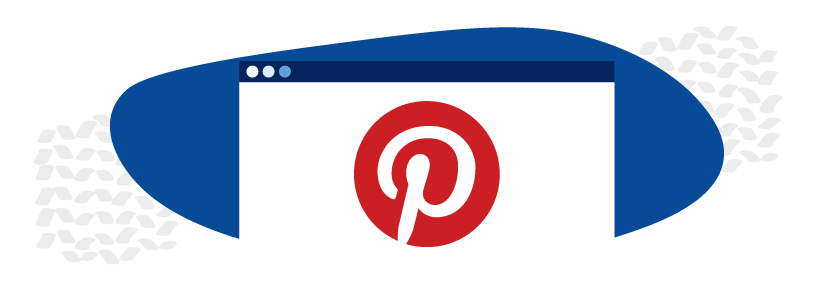
Pinterest — During its early years, Pinterest was an invitation-only visual discovery platform that allowed users (called pinners) to upload, save, and organize images. The network launched in 2009, and its growth was by word of mouth, and the platform became open to all in 2012. It’s now ranked the third-largest social platform in the U.S.
Snapchat — Launched in 2011, Snapchat is a mobile app used for photo, video, and message sharing. The platform is known for its one-view limit, and content disappearing after it is first viewed. Now, recipients can save and replay content.
Social Listening — Social listening for social media marketers simply means actively listening to the conversations happening around your brand, your content, and your digital environment. If you’re curious to know how people feel about a specific topic or relevant circumstance, read the comments on social media.
Tag — A tag generally refers to using either @mentions or hashtags to associate a person, organization, or theme with a post or comment.
TikTok — Formally known as Musical.ly, the Beijing-based company, TikTok, is a social media platform designed for creating, sharing, and discovering short music videos and content. It is arguably one of the fastest-growing social networks in the new decade, with over 1.5 billion downloads and growing.
Trending Topic — A trending topic is a popular subject or conversation that spreads rapidly and quickly on social media. If a conversation spikes within a matter of hours, it can be considered a trending topic, regionally, nationally, or worldwide.
Twitter — Launched in 2006, Twitter is considered a microblogging social networking platform because of its 280-character limit restriction, which is ideal for real-time updates around the world.
Notable Mention: If you’re a content writer, understand that Twitter is a place where original content can go to die. This unique platform is designed to transform micro-conversations into macro trending topics. If you’re the only person talking about it, the engagement (and impact) will be minimal. The best way to use this platform is to join current, relevant conversations that are already happening on the platform.
User-Generated Content — User-generated content involves social sharing of content from your clients or customers who showcase brand loyalty or brand love.
Notable Mention: User-generated content is all about building trust, creating a sense of community, and humanizing your brand. Brands that do this right use the power of authenticity within their messaging.
Vanity Metric — A vanity metric on social media includes any metric that doesn’t align with a conversion for your business goals. This can consist of followers, page likes, and subscribers.
Notable mention: For Facebook, did you know that someone can like your page, but unfollow your updates? On the contrary, they can also receive your updates without liking your page. Additionally, Pinterest followers do not align with monthly profile visits. Why? The platform is treated like a search engine and your content filters in the search engine.
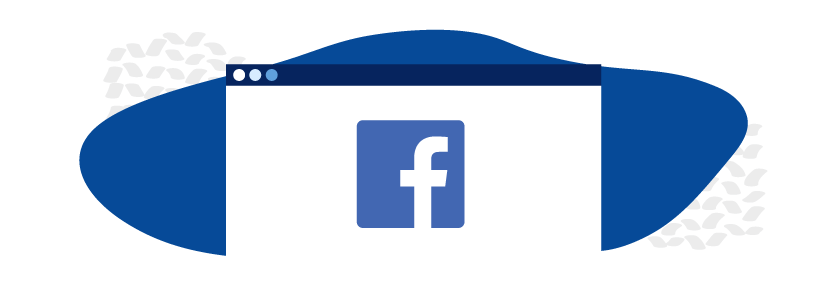
Social media marketing terms for Facebook:
Audience — An audience on social media is those individuals receiving your messages through social media platforms, by way of your posts or updates. An audience can include followers, fans, connections, and subscribers.
Ad Set — An ad set is short for “advertisement set,” and it is an advertisement with one objective, a budget, a timeframe for how long the ad should run, as well as bidding and placement options.
Audience Network — Consider this Facebook’s version of website ads. Facebook Audience Network serves Facebook ads off-platform to other mobile sites and apps that align with the desired targeted audience for the ad set. It can further extend your advertisement’s reach beyond the platform users.
Boosted Post — When you think of a boosted post, think of it like the first-generation iPhone. It was one of the first options available for advertisers to promote their organic content on the Facebook Platform. With media support, a brand can “boost” its visibility to more people. Now, a boosted post has minimal capabilities, and you will not have the comprehensive options of ad objectives that are available to advertisers through Ads Manager.
Business Page — A business page represents an official page for a celebrity, business, or branded entity on the Facebook platform. If you have a business, you must create and use a business page to engage and sell to your customers. If you’re using a personal profile, you are going against Facebook’s policy. This puts you at risk of being removed from the platform without notice.
Cost Per Action — Cost per action (CPA) can also be called cost per conversion for an advertiser’s objective request for conversions, like a lead or a sale.
Cost Per Click — Cost per click (CPC) is the associated cost for an advertiser’s objective request.
Dark Posts — The term, dark posts, refers to the paid ads that did not appear on a brand’s timeline. As a result of Facebook’s commitment to transparency, all ads can be found on a brand page’s profile through their Ad Library.
Facebook Blueprint — Facebook Blueprint is the educational hub to learn all about Facebook for Businesses. You can watch videos and learn the content at your own pace and prepare for the Facebook Certification exam. The self-paced videos are free, but the exam has an associated cost.
Facebook Campaign — A Facebook Campaign contains one or more ad sets and ads. It’s the overarching campaign that holds “micro-level” ads, and each ad can have its own objective.
Facebook Catalog — Facebook catalog allows e-commerce brands to add their products. It assigns a platform SKU (stock-keeping unit) within the catalog, or products can have prior SKUs from an e-commerce website.
Facebook Creator Studio — Facebook Creator Studio is the platform hub for content creators that integrates both Facebook and Instagram admin management. Within the platform, you can schedule content review published content analytics, and manage your business page inbox. If you manage multiple accounts, all business pages will reflect with your dashboard for efficiency.
Page Fans — Page fans are Facebook users who have chosen to “like” a brand page.
Page Followers — Page Followers are Facebook users who have chosen to follow the posts updates from a brand page.
Notable Mention: Have you heard of brand experts referring to a page like a vanity metric? This is the reason. Because of a user’s choice to customize their Facebook experience through their privacy settings, someone could become a fan of your page, and unfollow your post updates. On the contrary, someone can choose to follow your updates and prefer not to be a fan of the brand page. For this reason, do not place performance weight on page likes alone.
Facebook Group — A Facebook Group represents an open forum for like-minded Facebook users to converse and share ideas. Think of a digital meet-up space within the social network. With Facebook’s recent campaign focus on community, Facebook Groups have a high priority for the platform’s initiative of keeping people connected.
Facebook Marketplace — The Facebook marketplace is a buyer and seller forum for both brands, and consumers can sell products like clothing, furniture, and even homes. (Yes, you can showcase your house for sale or rent on Facebook Marketplace.)
Personal Profile — A personal profile is a general user’s page that is not associated with a business or group.
Pixel — A pixel is a snippet of code that you can add to your website coding for tracking purposes. This pixel will help Facebook track the behavior of your advertising conversions as well as the consumer behavior after landing on your website.
Relevance Score — A relevance score is unique to Facebook’s analytics, and it is provided to sponsored ads that reach over 500 impressions. Consider this score Facebook’s grade for your content. The grade consists of two major components: the relevance of your sponsored advertisement’s content to the audience, and the reaction of the audience toward your content. The more your audience favors your content and engages, the lower your price per action, and the higher your relevance score.
Target Audience — A target audience is a group of people defined by specific persona guides set by a brand.
Website Click — A website click objective measures the number of clicks to the link on a boosted post or sponsored advertisement.
WhatsApp — A part of the Facebook family of brands, WhatsApp is an app-based texting platform. Users can text with a masked number to people globally without using their phone service. WhatsApp is also the system used for the Facebook Messenger App.
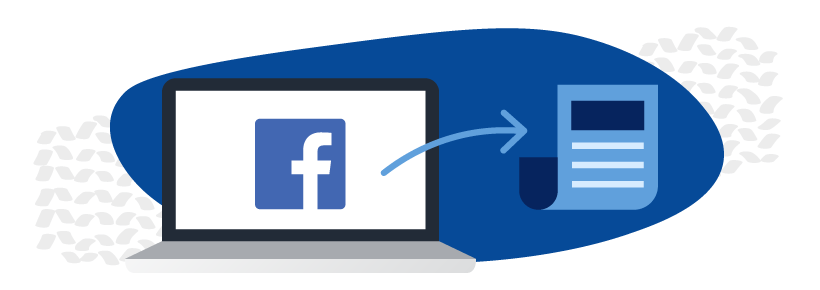
Within Facebook, we also have powerful advertising objectives that many may not realize exists.
There are three main categories (awareness, consideration, and conversion) and various objectives within each category.
Awareness — These objectives help you to bring more awareness to your brand.
- Brand Awareness — Increase overall awareness. (This objective can send out a survey to users to see if they can recall seeing your advertisement).
- Reach — The reach objective will show your ad to as many people as possible within your target audience. You can also choose the frequency (the number of times) people can see your ad.
Consideration — These objectives require a level of awareness from your audience and go deeper into the funnel, toward more information or taking further action.
- App Installs — The app installs will encourage, you guessed it – app installs.
- Engagement — The engagement objective targets people within your target audience who are most likely to engage with your content.
- Messages — The message objective will encourage users to send the brand page a message. When using this objective, be strategic with your advertisement copy to entice the audience to want to message you to learn more. It’s a great way to increase communication with your current and potential customers of the brand.
- Lead Generation — The lead generation objective encourages and collects desired data from users. This objective can be geared toward newsletter sign-ups or email marketing lists.
- Traffic — The traffic objective drives people off-platform to your app, website, blog, or landing page, etc.
- Video Views — The video views objective will share your video content with those who are most likely going to watch your content within your targeted audience.
Conversion — These objectives have a direct impact on sales and require a keen awareness of your brand from the audience. The ad will encourage people to purchase your products, goods, or services.
- Catalog Sales — If you have an e-commerce website, you can upload your products to Facebook Catalog, and create ads to drive catalog sales.
- Conversions — The conversion objective for ads encourages people to take a specific action down your company’s conversion funnel. This can include having your audience download an app, register to your website, or make a purchase. Unlike catalog sales, this is a one-touchpoint conversion level objective.
- Store Traffic — The store traffic objective helps track versions of in-store traffic through mobile GPS and geofencing.
- Landing Page Views — With Facebook ads, the website click objective includes accidental clicks since it’s the first generation of the website conversion objective. Landing Pages Views takes it a step further and counts the users that click and remain on the landing page.
Notable Mention: The landing page view objective requires a Facebook Pixel on your website. Without the pixel set-up, Facebook cannot track the behavior after the actual link clicks within your sponsored post or advertisement.
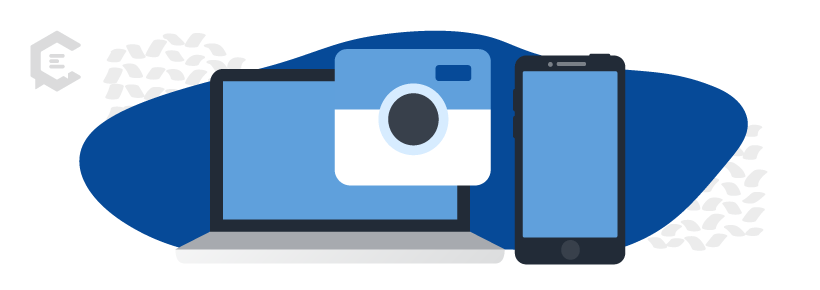
Social media marketing terms for Instagram:
Archived Posts — Archived posts merely remove the visibility of the post, and you can always reverse the archive to have it appear in its original spot among your profile images.
Bonus Tip: Are you looking to refresh the look of your Instagram profile? If so, archived posts allow you to do this without deleting your posts and losing the analytics from the posts you want to remove. This feature can be great if incorporated into a more extensive campaign. Coca-Cola wasn’t shy to archive posts for its kindness campaign in 2018. If you decide to execute this kind of campaign, be prepared to incorporate the amount of time it takes to archive all of your posts (and don’t forget to make all of the posts visible again afterward).
Bio — A bio is a brief description of your profile feed that has a 150-character limit.
Gallery — An Instagram gallery is a collocation of photos or videos within one post. A user can upload up to 10 images or videos within one gallery post.
Instagram Grid — The Instagram grid is the last nine photos uploaded to your profile and displays a nine-grid visual (with three rows and three columns).
Instagram Stories — The Instagram stories feature allows users to share a combination of quick 5-second frames or 15-second videos with friends and followers. Unless saved as an Instagram Story Highlight, the stories disappear in 24 hours.
Instagram TV (IGTV) — IGTV is one of the most recent features added to the platform designed for prerecorded, produced video content. IGTV content can be uploaded on mobile or desktop devices, and it can share a preview to your profile feed, to encourage more video views to the channel.
Profile Feed — The Instagram profile feed highlights the user’s latest content, within a nine-grid visual to followers visiting your profile.
Saved Posts — Saved posts are a way to keep posts that you want to go back to later, instead of searching your timeline for them later. The saved posts are only visible to profile admin users, not to followers.
Did you know that you can only follow 7,500 people on Instagram? You can have unlimited followers, but you cannot follow more than 7,500 accounts.
Timeline Feed — The Instagram timeline feed is the home feed for a user’s account. The feed will highlight the user’s followers and suggested hashtags to follow, and show content based on algorithmic engagement.
Username — A username is a unique handle for every user on the Instagram platform. The username has a 30-character limit in length and cannot be used by two individual users.

Social media marketing terms for Pinterest:
Pin — One should consider a Pin the Pinterest version of a post. It’s the primary action on the platform. Pins are the visual content added by a user or the content discovered on the platform. Unlike other platforms, pins can live for six months and beyond due to the platform’s search engine.
Pin Board — A pin board is the place where pinners can organize their pins. A user can have up to 500 boards associated with their profile, including secret boards and group boards that the users are connected to as a collaborator.
Notable Mention: Pinterest boards are rooted in categories because the platform is driven by a search engine (not pinner engagement). The categories ensure your boards have the proper category attributions.
Primary categories on Pinterest include the following:
-
- Popular
- Everything
- Gifts
- Videos
- Animals and pets
- Architecture
- Art
- Cars and motorcycles
- Celebrities
- DIY and crafts
- Design
- Education
- Entertainment
- Food and drink
- Gardening
- Geek
- Hair and beauty
- Health and fitness
- History
- Holidays and events
- Home decor
- Humor
- Illustrations and posters
- Kids and parenting
- Men’s fashion
- Outdoors
- Photography
- Products
- Quotes
- Science and nature
- Sports
- Tattoos
- Technology
- Travel
- Weddings
- Women’s fashion
Pinterest categories are not to be confused with topics. There are endless topics on the platform, but they align with one or more of these categories.
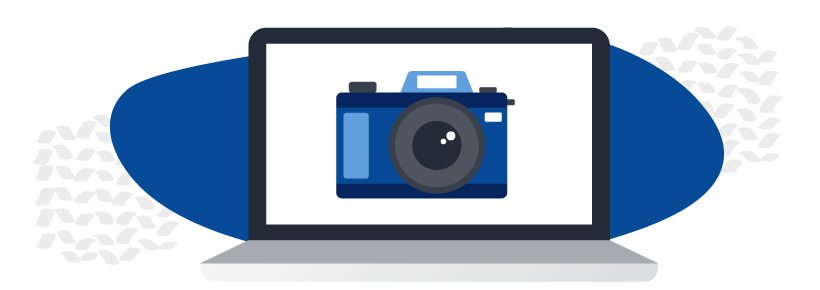
Pinner — A pinner is a Pinterest user who has a profile on the platform.
Repin — A repin is a pinner’s action to save another user’s pin.
Secret Boards — A secret board is a private Pinboard that is not included within the platform search engine.
Subboard — Subboards are subfolders within a Pinterest board, which helps for further organization within a large category.
Are you ready to take your social media strategy to the next level? Consider creating a proactive content strategy with socially relevant hashtag holidays.
Ready to Enhance Your Social Media Strategy?
Social media is an incredibly effective tool for content marketers. Whether you need to create a few social posts or craft an entire social media marketing strategy, ClearVoice is ready to help. Our managed content creation and expert social media content writers can ensure your social content drives engagement and boosts your brand’s visibility. Connect with us here to get started.



